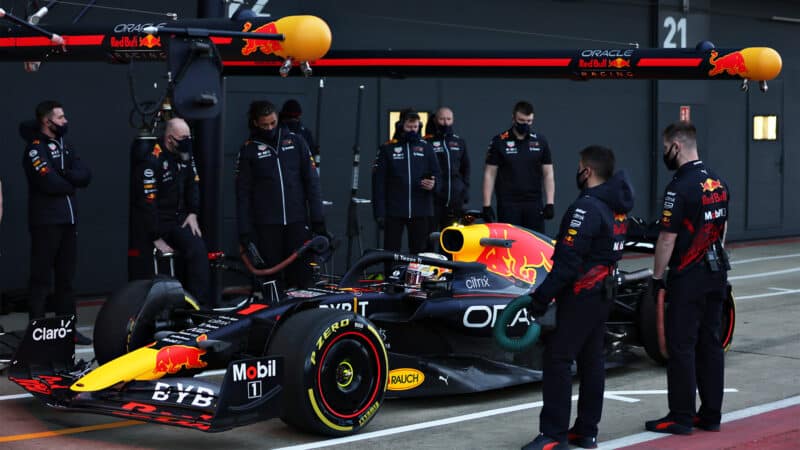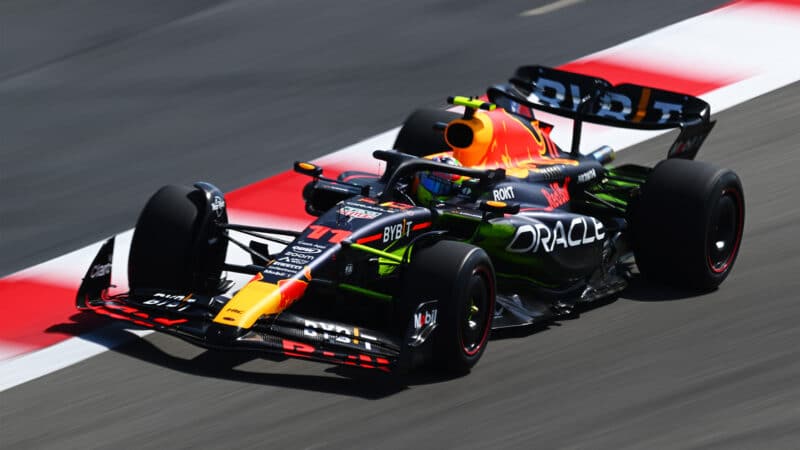Teams are permitted two of these filming days each year. Until 2023, they could cover up to 100km (62 miles) in each, but that distance was doubled for 2024 and 2025. On a circuit such as the Silverstone Grand Prix layout, drivers will now be able to complete up to 33 laps instead of 16.
Most teams use at least one of these days as a shakedown, while collecting video of the new year’s car as well. Haas will be using one of its two-day allowance on February 16, ahead of pre-season testing.
Demonstration events
Teams can also carry out up to two demonstration events each year, which must be approved by racing’s governing body, the FIA. Examples of these are where roads are shut down in city centres — although teams will more commonly use older cars for this purpose.
Current cars can run for only 15km (nine miles), while recent cars (from the previous three years) can cover 50km (31 miles).

Lewis Hamilton and Mercedes took the streets ahead of the Las Vegas Grand Prix in 2022
Getty Images
What do F1 teams do during shakedowns/filming days?
Over the 200km (125 miles) of allowed running, F1 teams will look to pinpoint any potential problems with their new car. These can then be addressed on the day or reported back to the factory, who can then try their best to fix the issue before the car heads out to Bahrain for three critical days of testing — starting on February 21.
This process — and the additional running — will be especially beneficial for teams who have redesigned their cars completely ahead of 2025, such as Ferrari, who recently revealed their car is “95% new” and will want to ensure that any faulty systems don’t hamper their testing time. Shakedowns can also be used to check new components or set-ups, and can also give new drivers some time to adjust to new surroundings.
Shakedown pace is typically slower than in a race situation, with the F1 machine often joined on track by a filming car and the priority being to ensure everything is working than expected rather than to test performance.
In any case, cars must be fitted with special Pirelli tyres, made specifically for these runs, to avoid teams gathering tyre data that could be useful in a race. These tyres have less grip than those on a grand prix weekend: they are often extreme editions of the hard tyre compound combined with some grooves which are often seen in wet weather tyres.

Max Verstappen and co could once again test their newest creation at Silverstone in 2025
Red Bull
The footage captured from these events is often used in TV and internet ads to promote the coming season or the team itself. It is usually distributed to media organisations as well, which is why you’ll see the same footage appear in third-party videos.
Teams must fit their car with an FIA electronic control unit (ECU) throughout the test, allowing the governing body to ensure that restrictions are observed.


